I may have missed this in the previous discussion, but for a 2 speaker configuration, is the idea that the DSP can handle the transformations for both L/R channels, and you can use the SPDIF out to connect to an amplifier in the second speaker? Just trying to understand the full setup.
Yes, of course it is possible. For example, you can form a signal for a subwoofer, into which you can install a more powerful amplifier with an optical input.I may have missed this in the previous discussion, but for a 2 speaker configuration, is the idea that the DSP can handle the transformations for both L/R channels, and you can use the SPDIF out to connect to an amplifier in the second speaker? J
FPGA converts the PCM signal into a PWM signal and organizes the feedback operation based on the amplified PWM signal.Also, just out of professional curiosity, what is the FPGA for?
Maybe not the right place to ask this question, but does it make sense (and is it possible?) to use two channels of the AMP bridged to drive a woofer, and the remaining channel to drive a mid/tweeter with a passive crossover? Is that kind of thing done?
It is impossible to combine two channels into one to increase the output power. Each channel already operates in bridge mode.to use two channels of the AMP bridged to drive a woofer, and the remaining channel to drive a mid/tweeter with a passive crossover?
It is possible to install two LF speakers of 100 W each in the case.
Or use a dual-channel 200W DAC version.
https://www.diyaudio.com/community/threads/2-way-dsp-amp-2x200w.422465/#post-7898483
Last edited:
Ah, the 2-way 200w may be the ticket then. 1 channel for the woofer and one for the mid/tweeter with a passive.
Considering an earlier project to convert my bedroom 2.1 system to this board, so I could have a streaming digital target as well as all the obvious other benefits, but I do need analog in. If I find an ADC with I2S output I like, how can I connect it? I feel like I saw a post about that somewhere...
Connecting an ADC with an I2S output to the board is no problem. If the ADC is a master, then ASRC in adau will very easily accept any ADC sampling frequency. The problem is that you want to save streaming, which also requires an I2S input from the board. As I understand it, you want to use one 3Way DSP Amp board to implement a 2.1 system. Therefore, to implement your task, you need an additional external switch that will switch I2S esp3 to I2S ADC. Or if you are good at programming, you can feed I2S from the ADC to esp32 and make priority there, the squeezelite-esp32 source code is open and can be modified to suit your needs....If I find an ADC with I2S output I like, how can I connect it?
Here is the source code for squeezelite-esp32.I actually have done ESP32 development in the past, so that might be no problem.
https://github.com/sle118/squeezelite-esp32?tab=readme-ov-file#spotify
On the input/output board with esp32 there is access to the IO4 IO5 IO19 ports, you can send an I2S signal from the ADC to these ports and, for example, when there is no transmission via Wi-Fi, it is enough to simply transmit the signal from the IO4 IO5 IO19 ports to the IO25 IO32 IO33 ports. In this case, the sampling frequency is not important because the I2S signal goes to the ASRC, which adapts the external frequency to the internal frequency of the adau1452.
Also, if you really want, you can take the master clock for the ADC from the amplifier board, if you look closely on the amplifier board there is a master clock output from the ADAU1452, the frequency of which can be adjusted in the adau. But I think this is unnecessary, I think an ADC operating from its own clock generator in master mode is quite sufficient.
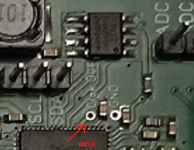
squeezelite-esp32 supports display with I2C. If desired, you can connect the display to the input/output board, you can also connect IR. In general, if desired, you can get indication and control from the remote control.
Updated the folder with projects for Sigma Studio in the first message. Added a subtractive crossover LR24 with a linear phase of the sum of all three bands.
https://vi.aliexpress.com/item/1005...=scene:pcDetailTopMoreOtherSeller|query_from:Audio Network Transmission Interface Dante AES67 is sold on Aliexpress.
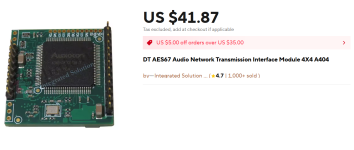
This module is very easy to connect to the 3Way DSP Amp using this input board.
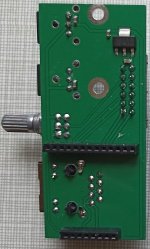
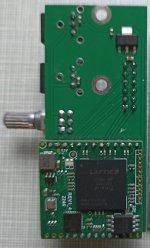
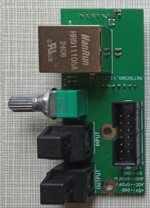

I want to know your opinion - does it make sense to assemble such input boards without the Network Transmission module, at a price of 15 dollars?
Will they be of interest?
Or is this a very rare and little-demanded data transfer protocol in DIY?
Created a thread on this solution. Anyone interested in this solution can ask questions in the specified thread.Will they be of interest?
https://www.diyaudio.com/community/threads/3way-dsp-amp-adapter-for-dante-aes67-board.426074/
A DAC like this arrived and I liked it right away as soon as I turned it on. The sound is very transparent and airy—especially for jazz, smooth jazz, and similar genres. What I really like is that I can run the optical output from my WiiM streamer straight into the board’s optical input, so no external DACs are needed. I set up room correction in the WiiM and ended up with this graph:

This board is interesting because you can spend a lot of time tweaking the sound.
Next step: I want to feed a digital stream directly to it over my home Wi-Fi and hook the amplifier board up to the computer via its interface so I can set the frequency-response correction right on the board.
Stage after that: I’d like to drive each driver in a three-way speaker system from the board’s three power outputs and use SigmaStudio together with a measurement microphone to dial in the sound.
To prepare for this, I bought a used set of vintage three-way bookshelf speakers—JVCs made in Belgium!

For now, I’m not planning to make the speakers fully active. I’ll keep the amp as a two-channel unit in its own enclosure and run six wires to one speaker and six to the other. Then I can keep tweaking the response. In short, a creative person will have enough to keep busy until the next century!
And also:
Today my entire audio chain changed dramatically thanks to this board.
I connected it directly to my home Wi-Fi and streamed all the services straight to the board—bypassing the WiiM, external DACs, and everything else. I also paired the TV over Bluetooth. It’s incredibly simple:
This board is interesting because you can spend a lot of time tweaking the sound.
Next step: I want to feed a digital stream directly to it over my home Wi-Fi and hook the amplifier board up to the computer via its interface so I can set the frequency-response correction right on the board.
Stage after that: I’d like to drive each driver in a three-way speaker system from the board’s three power outputs and use SigmaStudio together with a measurement microphone to dial in the sound.
To prepare for this, I bought a used set of vintage three-way bookshelf speakers—JVCs made in Belgium!
For now, I’m not planning to make the speakers fully active. I’ll keep the amp as a two-channel unit in its own enclosure and run six wires to one speaker and six to the other. Then I can keep tweaking the response. In short, a creative person will have enough to keep busy until the next century!
And also:
Today my entire audio chain changed dramatically thanks to this board.
I connected it directly to my home Wi-Fi and streamed all the services straight to the board—bypassing the WiiM, external DACs, and everything else. I also paired the TV over Bluetooth. It’s incredibly simple:
- On the iPhone you find the board’s Wi-Fi module, tap it, enter the password.
- A setup page opens—select your home network.
That’s it! Any stream plays: Spotify, Tidal, TuneIn Radio, you name it.
Right now I’ve got this minimalist still-life, practically avant-garde: one small board, a pair of speakers, and every audio source can play in high quality. Cool!
Thank you.Wauuu nice work uriy-ch ....
Oddly enough, such receivers are available for sale. But in general, this format is loved by recording studios.would have been nice if home theater receivers where outputting AES67 though ....
I was considering buying the two amp boards you currently have available for a 3 way studio monitor build I'm working on, would you be able to assist me with using these amp boards as plate amps? If so, I'll go ahead and purchase them asap
would you be able to assist me with using these amp boards as plate amps?
Wrote a response in private messages.
- Home
- Amplifiers
- Class D
- 3 Way DSP Amp